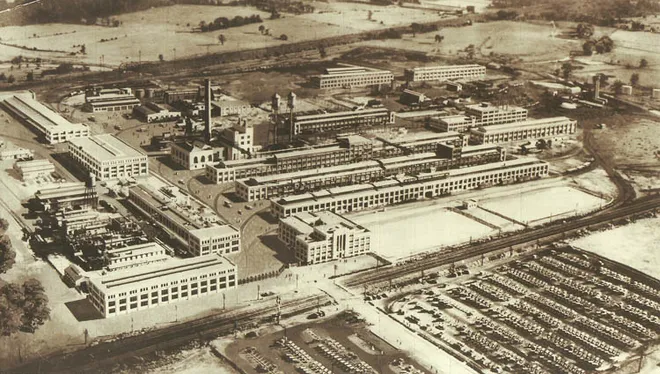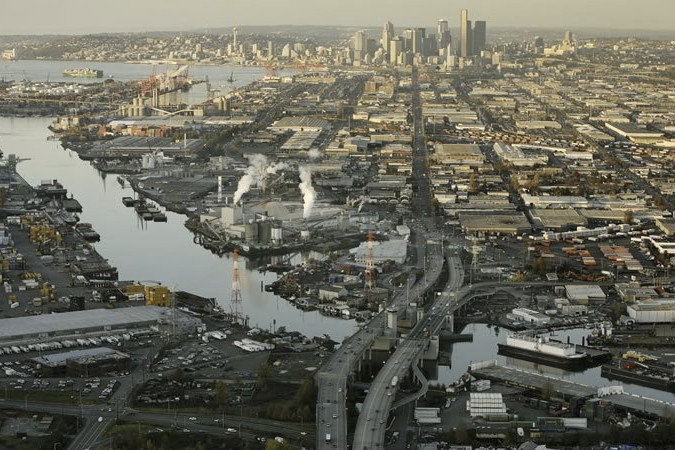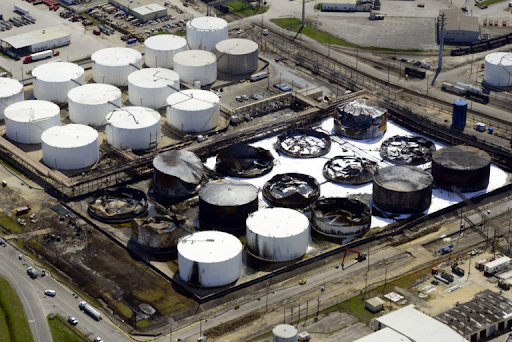For over a century, industrial activities have released hazardous waste into the environment, harming America's rivers and coastal resources. These pollutants can devastate coastal communities by accumulating in sediments and contaminating aquatic life, which leads to poor fish health, declining fish and shellfish populations, habitat loss, and restrictions on fishing, shellfishing, and other recreational activities. NOAA’s Office of Response and Restoration (OR&R) works with other NOAA offices through the Damage Assessment, Remediation, and Restoration Program (DARRP) to address these impacts. Key efforts include supporting cleanup agencies, conducting Natural Resource Damage Assessments (NRDA), and managing restoration projects nationwide.
Since the 1980s, NOAA and co-trustees have reached NRDA settlements at over 170 hazardous waste sites nationwide, generating over $922 million from polluters to restore injured natural resources. Additionally, protection and restoration have been integrated into more than 500 waste site cleanups to accelerate recovery. This work provides economic and cultural benefits to coastal communities, including tribes and historically underserved populations disproportionately affected by pollution. By restoring habitats and fisheries, NOAA supports jobs, cultures, and economies that help communities thrive, by protecting the benefits these resources provide—tourism, fishing and boating, flood protection, and more—for future generations. Restoring wetlands, reefs, and living shorelines enhances resilience of the nation’s coasts against storms, flooding, and sea level rise.
In 2024 alone, NOAA and co-trustees have been able to secure $40 million from four hazardous waste pollution settlements for the restoration of U.S. waterways. Keep reading to see details about the pollution settlement wins across the country from this past year.
American Cyanamid Superfund Site, NJ

On April 8, 2024, a final settlement with Wyeth Holdings, LLC was reached to compensate for natural resource injuries to fish and wildlife resulting from hazardous substance releases from the American Cyanamid Superfund site in Bridgewater, New Jersey. Under this settlement, 112 acres of forested floodplains and vernal pools will be created per the trustee’s final restoration plan and environmental assessment. This restoration project will provide needed habitat, as well as access to nature for communities that have been disproportionately affected by the pollution.
For decades, the American Cyanamid facility manufactured chemicals, pharmaceuticals, and distilled coal tar. Multiple hazardous substances were released to surface water, wetlands, floodplains, and the river bank, including heavy metals, semi-volatiles, polycyclic aromatic hydrocarbons (PAHs), and polychlorinated biphenyls (PCBs). Cuckolds Brook, a waterway which crosses the site and flows into the Raritan River, was a conduit for untreated liquid waste from the early 1900s through the 1930s. PCBs are often found in high concentrations in fish, causing consumption warnings, fishing advisories and restrictions on recreational fishing. The site was placed on the EPA’s National Priorities List in 1983. Direct discharge to the Raritan River ended in 1985, and manufacturing at the facility ended in 1999.
While it’s likely that this site is among those that contributed to the general degradation of the Raritan River over the last century, the site’s cleanup and compensatory projects will be important parts of the story of restoring the Raritan.
– Reyhan Mehran, NOAA Regional Resource Coordinator
Lower Duwamish River, WA
The Lower Duwamish River is a highly developed, urbanized, and industrialized estuary in Seattle, Washington. Hazardous substances have been released since the early 1900s with over thirty hazardous substances documented in the sediments of the Lower Duwamish River. The river includes three Superfund sites: Lockheed West, Harbor Island, and the Lower Duwamish Waterway. Toxic contaminants resulted in injuries to fish, birds, wildlife and their habitats and recreational uses, including fishing. Also, channelization and filling of shoreline habitats destroyed approximately 97 percent of the original aquatic and shoreline habitat. This past year, two settlements were finalized for habitat restoration.

On May 13, 2024, a settlement was finalized with Crowley, 8th Avenue Terminals, Inc. and the Washington State Department of Transportation. As part of the settlement, the parties purchased credits in Restoration Project One which was a restoration bank completed by Bluefield Holdings Inc. in 2014 on the Lower Duwamish River. Private parties build restoration projects to compensate for industrial pollution. To help resolve their ecological liability, companies responsible for pollution can purchase “credits” generated by these private projects. This project created several habitat types that serve as nursery and feeding grounds for many fish species including salmon, and as a nesting place for migratory birds.
On July 15, 2024, another settlement was finalized with General Recycling and two affiliates valued at over $23 million. As part of this settlement, the companies will construct and maintain a habitat restoration project at the General Recycling facility, located on the west bank of the Lower Duwamish River in a high-priority, industrialized area of the river. It will include nearly three acres of shoreline and off channel aquatic habitat that will provide refuge areas and food sources for wildlife and various fish species, including juvenile salmon migrating from upriver spawning areas. The final restoration plan and environmental assessment outlines the proposed habitat restoration project.
NOAA is pleased to join this agreement with our co-trustees, private partners and industry to help restore vital habitats, fisheries and wildlife injured by pollution at this site. Clean and productive waterways are vital to Tribal and local communities and this restoration will especially benefit those who have been disproportionately impacted by pollution.
– Nicole LeBoeuf, Assistant Administrator for NOAA's National Ocean Service
For several years, NOAA and co-trustees have been conducting a natural resource damage assessment to assess the impacts of this contamination and secure restoration on behalf of the public. The trustees identified numerous potentially responsible parties for this contamination. These settlements are part of a series of early settlements with polluting parties for natural resource damages in the Lower Duwamish River. Recent settlements include: the Boeing Company (2010); the City of Seattle (2021); Vigor Industrial and Exxon Mobil Corp. (2021); Lynden parties (2023) and several bankruptcies. NOAA and co-trustees continue negotiations with other potentially responsible parties who elected to participate in the early settlement phase. Future legal agreements finalizing those settlements would allow for more habitat restoration on the river. Additional information about this site is available on this Lower Duwamish River story map, created by NOAA and the Elliott Bay Trustee Council.
ITC Tank Fire, Deer Park, Texas
On March 17, 2019, a storage tank caught fire, engulfing much of a tank battery at the ITC Deer Park facility in Deer Park, Texas. The fire was initially extinguished, but reignited on March 22 and damaged a second containment wall of the tank facility. This caused a catastrophic breach, releasing hundreds of thousands of barrels of a hazardous mixture of petrochemicals from the storage tanks, along with fire water and firefighting foams into the environment. Waterways affected included Tucker Bayou, Buffalo Bayou, San Jacinto River, Houston Ship Channel, Carpenters Bayou, Old River, Santa Anna Bayou and other surrounding water bodies.

The Trustees determined that the released hazardous substances caused significant injuries to ecological resources, including marsh, riparian habitat areas, and birds. In addition, the hazardous chemicals released into air and water resulted in lost recreational opportunities in the Deer Park area.
On June 20, 2024, a settlement for $6.6 million was reached with Intercontinental Terminals Company, LLC (ITC), the responsible party—for impacts to ecological services and recreational activities from pollution, as well as the cost of assessing those injuries. The ITC Trustee Council will begin working to identify restoration projects that will improve habitat and recreational use of the injured natural resources in Galveston Bay. The proposed projects will be included in a Restoration Plan where the public will have an opportunity to provide input.
Restoring America’s waterways after hazardous waste pollution protects natural resources and the benefits they provide to local economies and communities, like enhanced biodiversity, fisheries, and recreational opportunities. NOAA DARRP’s role in holding polluters accountable and using hazardous waste settlement funds for restoration ensures that future generations can enjoy clean, thriving rivers, reinforcing the connection between environmental protection and public well-being.
